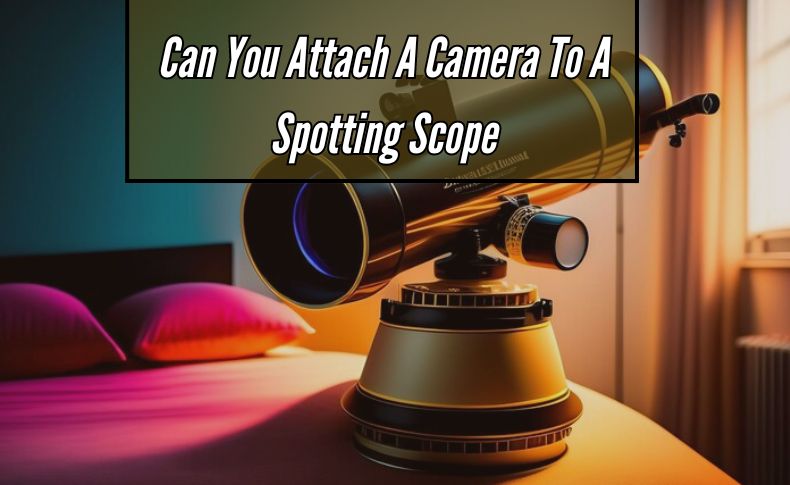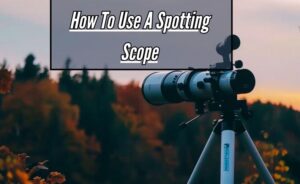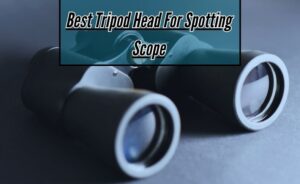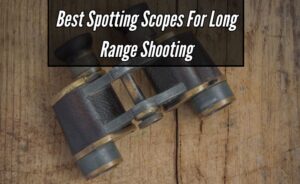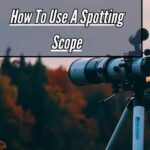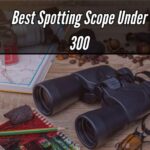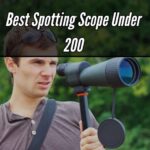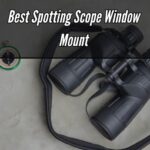We frequently investigate the world around us out of curiosity, whether it be in our backyard or beyond. It’s not unusual to inquire if a spotting scope can have a camera attached to it. Spotting scopes are excellent instruments for precise and clear observation of far-off objects. But, if you include a camera in your setup, you’ll have access to an entirely new world of opportunities for taking breathtaking pictures or movies of wildlife, astronomical phenomena, or even landscapes.
Can You Attach A Camera To A Spotting Scope? Yes, a camera adapter allows you to mount a camera on a spotting scope. By firmly attaching this adapter to the spotting scope’s eyepiece, you can take excellent pictures or films of far-off objects. It’s an easy method to record your observations and improve your watching experience.
In this guide, we’ll delve into the feasibility of attaching a camera to a spotting scope, exploring the various methods and considerations involved. So, if you’re ready to take your photography to new heights and improve your spotting scope experience, keep reading to find out how to combine these two effective instruments in a smooth manner.
Capturing the Cosmos: Step-by-Step Guide to Attaching Your Camera to a Spotting Scope
Photographing breathtaking astronomical sceneries with your camera mounted on a spotting scope may be a fulfilling experience that combines the beauty of astronomy with photography.
This is a comprehensive tutorial that will walk you through the process of easily mounting your camera on a spotting scope so you can start taking space photos.
Attach the Adapter:
Attach the proper camera adapter to your spotting scope first. To provide a reliable connection, this adapter acts as a bridge between your camera and the scope. To avoid any wobbling or misalignment during shooting, make sure it fits snugly.
Attach Your Camera:
After positioning the adaptor, gently attach your camera to it. Make sure the camera is firmly attached to avoid any unintentional drops or harm. To ensure that the camera and adapter are firmly attached, double-check the connections.
Camera Settings:
Be sure to adjust your camera settings before you start shooting cosmic beauties. To have complete control over exposure parameters including ISO, shutter speed, and aperture, choose manual mode. This makes it possible to capture the fine features of astronomical objects and adjust to changing light conditions with more flexibility.
Auto ISO:
Although you can adjust the majority of the settings in manual mode, you might want to turn on auto ISO to automatically maintain the best exposure levels. This feature ensures consistent image quality without requiring continual changes, which can be very helpful while shooting in lighting circumstances that change quickly.
Frame Your Shot:
After setting up your settings and attaching your camera, take a minute to compose your shot using the spotting scope’s eyepiece. Try varying the composition and viewpoint to get the essence of the universe into your shot. For aesthetically striking effects, pay close attention to the placement and proportion of the various components in the scene.
Focusing:
Securing accurate focus is essential for taking detailed and crisp pictures of astronomical objects. Press the focus button to gradually bring your subject into sharp, clear focus within the frame. When focusing the camera, especially for long-distance star photography, take your time.
Unlocking Photographic Potential: Harnessing Your Spotting Scope’s Camera Attachment
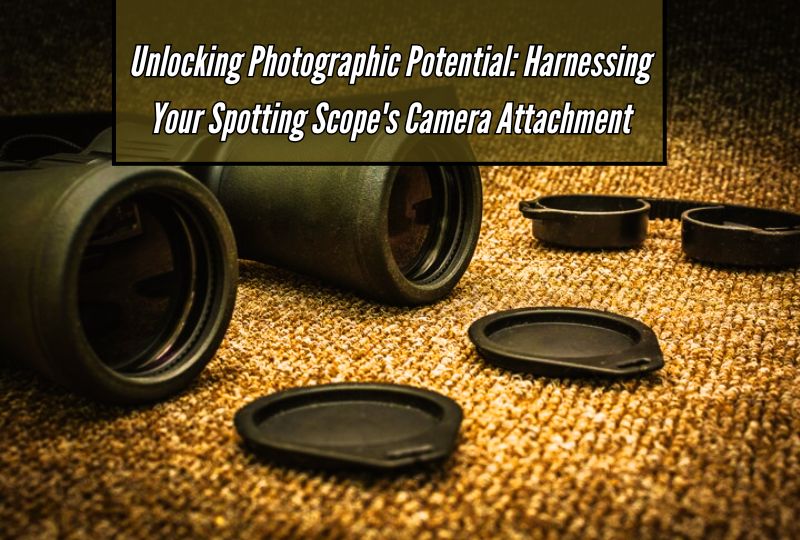
It can be satisfying to see far-off things or capture the beauty of nature, especially when you combine these activities with the useful instrument of a spotting scope’s camera adapter.
Through the lens of your camera, this clever device lets you concentrate sharply on faraway subjects, giving you a closer look at the world around you. Here’s how to realize all of its possibilities:
Understanding Your Equipment:
It’s imperative that you become familiar with both your scope and camera before doing any serious photographs with it. Spend some time reading the user instructions, experimenting with various settings, and practicing securing your camera to the scope.
Choosing the Right Camera:
Choosing the appropriate camera to go with your spotting scope is essential to getting the best possible results. Think about things like the resolution, size of the sensor, and if it works with the attachment system on your scope. With the ability to modify aperture, shutter speed, and ISO to accommodate different lighting situations, a camera with manual exposure settings will provide you more control over your photos.
Perfecting Your Technique:
Using a spotting scope to take beautiful pictures needs practice, perseverance, and an acute attention to detail. To get the ideal shot, try out various focal lengths, angles, and compositions. To reduce camera shake and take crisp, clear pictures, make use of features like image stabilization and remote shutter releases.
Embracing Natural Light:
The ability of a spotting scope to gather light, especially in low light, is one of the biggest benefits of utilizing one for photography. Take advantage of the best natural lighting circumstances by taking pictures at sunrise and sunset, or on cloudy days when the light is diffused and mellow. Stay out of direct midday sunshine as it might produce washed-out hues and harsh shadows.
Editing and Post-Processing:
After taking your photos, spend some time editing and perfecting them with a photo editing program. To improve the visual impact of your photos, play around with exposure, contrast, and color balance. Take caution not to overprocess your photos because the outcome may seem artificial.
Sharing Your Work:
Lastly, remember to tell the world about your amazing photos! Sharing your photographs enables you to interact with other photography lovers and get insightful criticism on your work, regardless of whether you exhibit your work on social media, build a portfolio website, or compete in photography contests.
Scoping Out the Perfect Match: Finding the Ideal Spotting Scope for Camera Attachment
Finding the ideal fit for your requirements requires sifting through the wide range of possibilities while exploring the world of spotting scopes for camera attachment. This thorough guide will assist you in choosing the best spotting scope:
Understanding Your Requirements:
Consider your unique requirements for a minute before beginning the selecting procedure. Take into account elements including the intended purpose, the desired level of magnification, portability, and financial limitations. This first step will help you focus your search for the ideal spotting scope by reducing the wide range of options.
Optical Quality Matters:
The most important factor in spotting scopes is optical quality. Seek out scopes with premium lenses and coatings to guarantee crisp, clear views with low aberration and distortion.
To guarantee the best performance under different lighting settings, pay attention to factors such lens diameter, glass type, and coating technology.
Compatibility with Camera Attachment:
Compatibility is crucial as you want to place a camera on the spotting scope. Make sure the spotting scope you select has the mounting options or adapters needed to safely attach your camera. In addition, take stability and weight capacity into account to avoid any unwelcome movement or vibrations during photo sessions.
Ergonomics and Durability:
It’s crucial to have a spotting scope that is both easy to use and durable enough to survive outdoor activities. Be mindful of ergonomic details like focus knobs, grip patterns, and general construction quality.
Choose scopes made of sturdy materials that can resist exposure to inclement weather and severe handling, such magnesium or aluminum alloy.
Portability and Weight:
Considerations such as portability and weight may be important, depending on how you want to use it. Consider lightweight, portable types that won’t add extra weight to your backpack if you intend to travel often or undertake long-distance treks with your spotting scope.
To meet your needs, strike a compromise between mobility and optical quality, bearing in mind that ultra-compact designs may result in some optical performance being lost.
Additional Features and Accessories:
Numerous spotting scopes have a number of extra functions and attachments that might improve your experience in general. For increased convenience and adaptability, look for features like rotating eyepieces, integrated sunshades, and waterproof construction.
To get the most out of your spotting telescope, look into appropriate accessories like carrying cases, digiscoping adapters, and smartphone adapters.
Budget Considerations:
Finally, while choosing a spotting scope for a camera attachment, take your budget into account. Although it could be tempting to choose the most feature-rich and costly model on the market, there are many more affordable choices that provide great performance and value. Prioritize characteristics that are critical to your needs as a photographer and establish a reasonable budget based on your specifications.
Capturing the Vision: Navigating the Choice Between Smartphone and DSLR Cameras for Spotting Scope Attachment
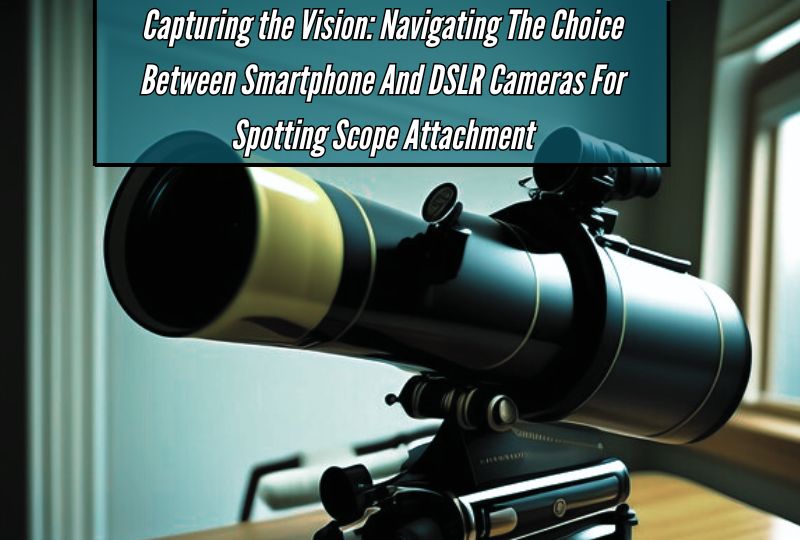
The quality of your outdoor photos can be greatly affected by the digiscoping tool you choose. Now let’s explore the two main choices: cellphones and DSLR cameras.
Using DSLR Cameras For Digiscoping:
DSLR cameras are well known for their excellent image quality and adaptability. They provide unmatched accuracy and detail when used in conjunction with a spotting scope to capture far-off subjects. Beautiful photos may be produced with more control over exposure and depth of field thanks to their bigger sensors and interchangeable lenses.
DSLRs also frequently have sophisticated focussing technologies, which facilitate tracking moving objects. But some customers could be put off by their heft and intricacy, especially if they’re searching for something more portable and easy to use.
Using Smartphones (And Point and Shoot Cameras) For Digiscoping:
Digiscoping has made possible new opportunities for outdoor enthusiasts, and smartphones have completely changed the way we capture memories. Smartphones provide unmatched convenience and accessibility due to their small size and user-friendly interfaces. High-resolution sensors and sophisticated image processing algorithms are only two of the remarkable camera features found on many contemporary smartphones.
Smartphones can capture images with incredible clarity and detail, even surpassing those of classic DSLR settings when paired with the appropriate adaptor and spotting scope. As a compromise between portability and image quality, point and shoot cameras are also a good choice for digiscoping.
Factors to Consider When Choosing Between the Two:
Portability and Convenience:
- Smartphones are incredibly portable and can be easily carried in a pocket or backpack, making them ideal for spontaneous outdoor photography.
- DSLR cameras, while offering superior image quality, are bulkier and require additional accessories such as lenses and tripods, which may hinder mobility.
Image Quality and Control:
- DSLR cameras excel in image quality, offering greater control over settings such as aperture, shutter speed, and ISO.
- Smartphones have made significant strides in image quality, with many flagship models rivaling entry-level DSLRs. However, they may lack the manual controls and flexibility of DSLRs.
Budget:
- DSLR cameras and lenses can be costly investments, particularly for high-end models and professional-grade equipment.
- Smartphones offer a more budget-friendly option, as they eliminate the need for additional camera gear. However, accessories such as spotting scope adapters may still incur additional costs.
Skill Level:
- DSLR cameras require a certain level of technical proficiency to fully harness their capabilities, including understanding exposure settings and composition techniques.
- Smartphones, with their user-friendly interfaces and automatic shooting modes, are more accessible to beginners and casual photographers.
Zooming In: Unveiling the Remarkable Magnification Power for Spotting Scope Camera Attachments
The capacity of spotting scopes to clearly examine distant objects has long been admired, but recent technological breakthroughs have increased the magnification capability of spotting scope camera attachments to unprecedented levels.
By giving a closer look at the wonders of the natural world, these cutting-edge accessories offer a plethora of benefits for outdoor enthusiasts, photographers, and wildlife observers alike.
Enhanced Clarity and Detail
The improved clarity and resolution that spotting scope camera additions can offer is one of their most prominent benefits. These attachments’ strong zoom capabilities enable users to precisely capture minute details of far-off subjects. Users can now see wildlife, celestial bodies, and picturesque landscapes with an extraordinary level of clarity and detail that was previously unthinkable.
Versatility in Observation
With the ability to adjust to various viewing circumstances, spotting scope camera attachments provide users with an unmatched level of versatility in observation. These add-ons give users the unmatched flexibility to investigate their surroundings by enabling them to capture breath-taking panoramic vistas and close up on secretive creatures.
Because spotting scope camera attachments are so versatile, they are a must-have tool for any outdoor lover, whether they are into birdwatching, stargazing, or landscape photography.
Seamless Integration with Existing Equipment
Spotting scope camera attachments have several benefits, one of which is their easy integration with current apparatus.These accessories may be attached quickly and easily for rapid magnification, and they work with a range of spotting scope models and camera systems.
With no need for significant adjustments or extra equipment, this smooth integration guarantees that consumers may easily improve their current configuration.
Unrivaled Portability and Convenience
The unparalleled portability and convenience of spotting scope camera attachments make them the perfect partners for outdoor adventures. These attachments are small and light, making them portable in a camera bag or backpack and enabling users to shoot beautiful pictures wherever their travels take them.
Users can never miss a moment of the action with the portable nature of spotting scope camera attachments, whether they’re going on a safari excursion or traveling through difficult terrain.
Immersive Viewing Experience
Through the utilization of spotting scope camera attachments, viewers can experience an unparalleled level of immersion in seeing thanks to their exceptional magnification power.
These attachments offer an unmatched level of immersion that puts users right in the thick of things, whether they’re studying far-off species or exploring space. A totally immersive viewing experience that is sure to captivate and inspire is provided by spotting telescope camera attachments, which include crystal-clear optics and tremendous zoom capabilities.
Optical Evolution: Navigating the World of Digiscope Adapters for Spotting Scope Photography
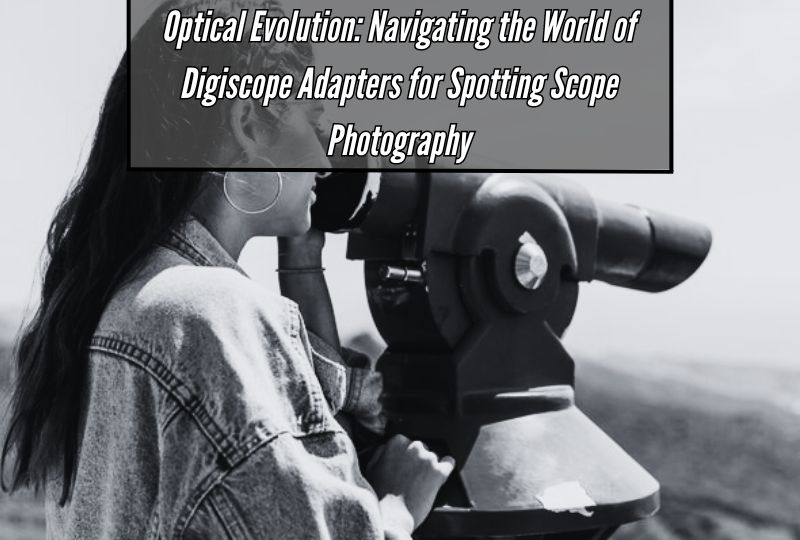
Understanding Digiscoping: Digiscoping is the practice of photographing far-off objects with a digital camera or smartphone via the lens of a spotting scope. It makes use of digital imaging technologies in conjunction with optics to bring distant subjects closer for up-close examination and shooting.
Choosing the Right Adapter:
Choosing the right adapter to link your camera or smartphone to the spotting scope is essential to successful digiscoping. There are several types of adapters available, from general to model-specific. When making your decision, it’s critical to take compatibility, stability, and convenience of usage into account.
Identification of Components:
It’s crucial to comprehend the major elements involved in digiscope adapters in order to navigate the globe with ease. The spotting scope, camera or smartphone, adapter, and optional extras like stabilizing mounts or remote shutter releases are usually included in this list. Getting acquainted with these elements will improve your experience overall and speed up the setup process.
Imaging through a Spotting Scope:
Spotting scopes are perfect for taking close-up pictures of far-off objects because they are made for long-range observation. They provide magnification well beyond what can be obtained with conventional camera lenses when used in conjunction with an appropriate adaptor.
Through a thorough understanding of focal length, aperture, and image stabilization, photographers can get the most out of their spotting scope and produce breathtaking shots.
Optimizing Image Quality:
Using a spotting scope effectively demands technique and close attention to detail in order to produce high-quality photographs. The final output is influenced by a number of factors, including focus precision, picture stabilization, and ambient illumination. Shooters can hone their craft and create remarkable shots by experimenting with various setups and approaches.
Exploring Creative Possibilities:
Digiscoping gives photographers a whole new range of artistic options, enabling them to capture unusual angles and elusive objects. The adaptability of digiscope adapters provides countless chances for creativity and discovery, whether capturing wildlife, astronomical events, or far-off landscapes on camera.
Embracing the Evolution:
The field of digiscoping is always changing along with technology. The limits of what is conceivable are always being pushed by developments in optics, camera sensors, and adaptor designs. Photographers can stretch their creative boundaries and discover new creative avenues by remaining informed and embracing these advancements.
Conclusion:
In conclusion, you can greatly improve your experience with outdoor observation by mounting a camera on a spotting scope. It gives you access to an entirely new realm of possibilities and makes it possible for you to share and record amazing moments.
This little addition can take your hobby—whether it be stargazing, birdwatching, or environmental appreciation—to new heights. Just keep in mind that for best effects, select the appropriate adapter and camera configuration. You’ll be astounded at what you can see through your spotting telescope with the correct equipment and a little bit of imagination.
Frequently Asked Questions (Can You Attach A Camera To A Spotting Scope)
Can you put a camera on a spotting scope?
Yes, you can connect a camera to a spotting scope to take pictures of wildlife and distant landscapes. Many spotting telescopes have a “digiscoping adapter” capability that lets you attach a camera to the scope. This adapter aligns the camera’s lens with the spotting scope’s eyepiece so they can work together.
Digiscoping refers to using a spotting telescope and a camera together. It’s a fantastic technique to capture images or films of distant objects like birds, landscapes, or even the moon in high-quality. The spotting scope functions as a potent telescopic lens, allowing you to get up close and personal with your subjects without disturbing them. Make sure your spotting scope is mounted firmly and is focused on the target when setting up. Make use of a tripod for steadiness
How do you attach a DSLR camera to a spotting scope?
A specific item known as a “digiscoping adapter” is needed to connect a DSLR camera to a spotting scope. By connecting your camera to the spotting scope’s eyepiece with this adapter, you can line up the camera’s lens with the eyepiece’s optics. Depending on the type of spotting telescope and camera you’re using, there are various digiscoping adapter types available. While some adapters are made to work with particular brands and models, others are more flexible.
Typically, in order to attach the camera, you must firmly fasten the digiscoping adapter to the spotting scope’s eyepiece. Using the tripod socket on your DSLR camera, you then attach it to the adapter. Through the spotting scope’s lens, you may use this configuration to take pictures and even films.
Can you use spotting scope with DSLR?
A spotting scope can be used with a DSLR camera to take clearer pictures of faraway objects. This method, called “digiscoping,” entails lining up the camera’s lens with the spotting scope’s optics in order to increase magnification and improve image quality. For photographers who wish to experiment with long-range photography without spending a lot of money on long telephoto lenses, dithering can be especially helpful.
You can use the spotting scope’s magnification capabilities by connecting your DSLR camera to it using a digiscoping adapter, as was previously explained. This enables you to take in-depth pictures of birds, wildlife, landscapes, and other difficult-to-approach subjects.
Will a camera tripod work for a spotting scope?
Yes, you can stabilize a spotting scope using a camera tripod. Spotting scopes are frequently employed for pursuits like birdwatching, wildlife observation, and even astronomy, where steady and clear views depend on a solid platform. Similar to this, a firm platform is essential when using a spotting telescope for digiscoping with a DSLR camera in order to prevent camera shake and take clear pictures.
You can use a specific spotting scope mount or adapter to attach the spotting telescope on a reliable camera tripod when utilizing a camera and spotting scope together. This makes sure the spotting telescope is sturdy and enables you to precisely move and focus it. It’s critical to pick a tripod that can withstand the combined weight of the spotting scope and camera.
What is the importance of eyepiece adapters?
In order to increase flexibility and functionality while attaching various eyepieces to telescopes, microscopes, or cameras, eyepiece adapters are essential. Users may quickly swap between eyepieces for different magnification levels and observational purposes thanks to these adapters, which guarantee a snug and comfortable fit.
Through compatibility, eyepiece adapters let amateurs and experts get the most out of their gear for specialized uses like astrophotography, microscopy, and stargazing. In the end, these adapters enhance the flexibility and fun of watching by enabling people with a wide range of hobbies and curiosity to learn about the wonders of the cosmos.
How does magnification affect camera attachment?
The amount of zoom or enlargement a lens may produce is referred to as magnification in camera attachment terminology. The size and clarity of the photos that are captured are directly impacted by it. With telephoto lenses and other higher magnification, distant subjects become more detailed and closer. Broader scenes are captured, however, by wide-angle lenses that have a lower amplification.
Depending on your needs for photography, selecting the appropriate magnification is essential. Magnification can distort images when applied excessively, and it can also obscure small details when applied insufficiently. By choosing the right lens, photographers may ensure the best composition and quality of image in their shots by being aware of the effects of amplification.

